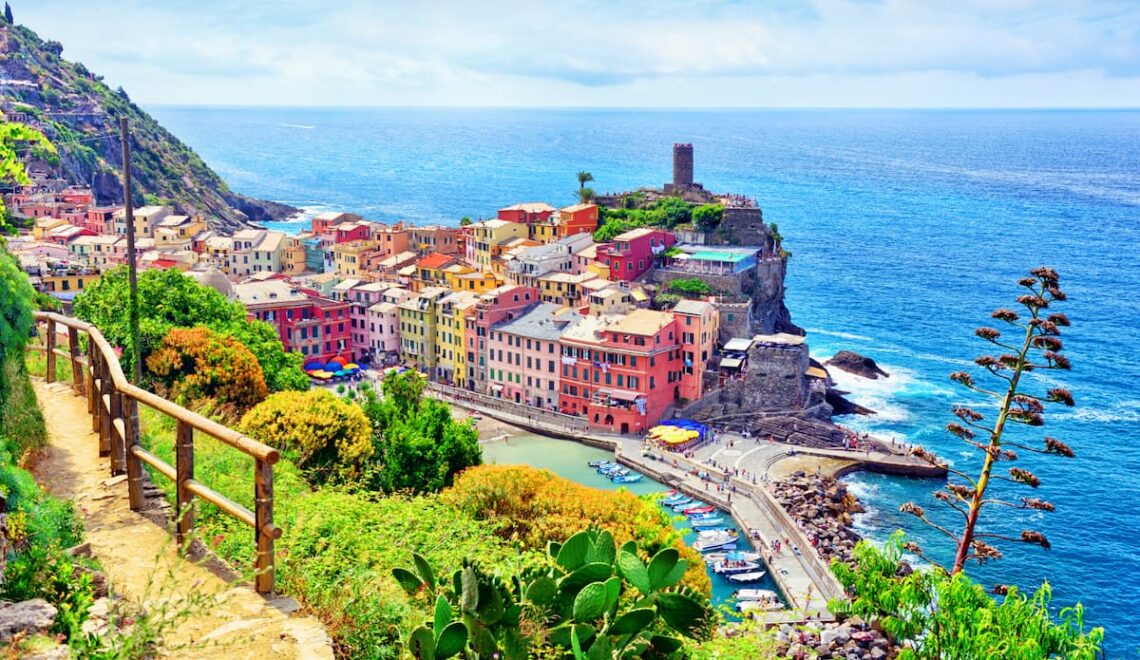
If you’re thinking of spending a few days in Milan and curious about what the best typical dishes are, then you’re in the right place. Discover Italo’s list!
If your organizing a business trip or a simple weekend to the fashion capital, be sure to try some of the typical Milanese dishes and also find out what to see and do for free in Milan.
From panettone to risotto, and cassoeula to cutlets, in Milan the culinary tradition is vast and delicious. This guide will help you decide what to eat and where to taste the best dishes in the Lombard capital. Milan Central Station also offers you the opportunity to savor Milanese delicacies in the best restaurants and bars.
What more do you need to book your trip?
Find out what’s cooking in Milan with our list of 5 essential dishes:
- Milanese risotto with ossobuco (bone-in meat shanks)
- Veal cutlet or schnitzel
- Cassoeula with polenta (pork and cabbage stew)
- Mondeghili (Milanese meatballs)
- Panettone (Milanese fruitcake)
- With Italo, head to Milan
1. Milanese risotto with ossobuco (bone-in meat shanks)

The first essential dish and undisputed protagonist of Milanese cuisine, with its centuries-old origins, is the famous Milanese risotto with ossobuco! This risotto is not a simple risotto with saffron because it’s prepared using a cut of meat left on the bone so that the marrow infused into the dish. It must be served strictly with the ossobuco (a cut of meat surrounding a bone).
Ossobuco and Milanese risotto are an inseparable combination, typical to Lombard cuisine. The origins of this dish made with rice, saffron and marrow date back to the 1500s, although we had to wait until the 1800s to get the tried-and-true recipe.
Ossobuco is a very tender cut of veal, to be exact it’s the rear shank, although the front shank can also be used. At about 4 cm thick, the ossobuco is characterized by the central bone inside which contains the marrow, and though fattier, it’s extremely tasty. Compared to the classic yellow risotto, ossobuco’s addition of the marrow makes all the difference and makes this typical Milanese dish truly unbeatable. The fat in this dish is of fundamental culinary importance: not only is it present in the marrow, which you can savor with a small spoon, but also in the butter with which the risotto is cooked and creamed.
Don’t miss our taste guide to 10 places to take your lunch break in Milan!
2. Veal cutlet or schnitzel

The Milanese cutlet is a meat-based dish that you must try at least once while in Milan. It’s served on the bone and fried in butter. This historic dish first appeared on Milanese tables: 17 September 1134, the day of San Satiro, an anniversary that honored the brother of Bishop Ambrogio in the Basilica of Sant’Ambrogio in Milan, a lavish banquet was consumed and among the courses there was the now famous cutlet. But it was only in 1814 that the cutelèta, in the Milanese dialect, had a place of honor in Cherubini’s dictionary.
The cutlet is a browned, breaded and fried tenderized cut of veal. According to some traditions, the origin of the word is French, côtelette. It is said that it was the French who brought it to Italy during the Napoleonic invasions and that the cutlets of the French Revolution were just slices of marinated meat and then breaded and fried with various flavorings, such as cloves.
There are two ways to serve and enjoy the Milanese cutlet: one is to leave the bone in, thus using a thicker cut of meat, while the other involves pounding the slice of meat to spread it out and make it even bigger. This latter version has the nickname elephant ear, in the Milanese dialect: uregia d’elefant, because of the resemblance to the ear of the large animal.
In short, it’s hard to resist the Milanese cutlet, so if you want to taste the typical dish with a lengthy history, check out our tips on where to eat the best cutlet in Milan.
3. Cassoeula with polenta (pork and cabbage stew)

The third traditional dish that we recommend from Milan is cassoeula, a folk dish prepared with various pieces of pork such as the rind and ribs and cabbage. The name of the dish could derive from the kitchen utensil used to prepare it, i.e., the cassoeu, a ladle in the Milanese dialect. For other scholars it could be a reference to the pan in which it cooks: the casserole, cassoeula, in the Lombard dialect.
The origins of this winter cult dish are uncertain but what is known is that the peasant recipe has been handed down for centuries. One school of thought believes it comes from northern Europe, especially from Alsace, where the famous choucroute is prepared, a substantial dish of pork and fermented cabbage. Some scholars consider it a dish of Baroque cuisine, based on different meats such as pork, sheep and poultry, dating back to the 1500s. The recipe we know today appears in cookbooks from the 19th century as a dish of peasant rituals to be offered at the table in wintertime between November and January.
This pork and cabbage stew was created to help face the cold days of autumn and winter. Following tradition, the cabbage used for this dish must only be picked after the first frost so that its leaves will be more tender, and the cooking time will be shorter.
But how is it prepared? The cuts of pork, such as feet, ears, and rinds are placed in a large pan with ribs, and verzini sausages. Once the meat is browned well, abundant heaps of stewed cabbage with carrots, celery, onion and meat broth are added. When the steaming pan is ready, it is poured into a baking dish. Try cassoeula with some delicious polenta for a complete meal with an irresistible flavor.
In short, you really must try this hearty, filling dish at the best restaurants in Milan. You won’t regret it!
4. Mondeghili (Milanese meatballs)

The fourth typical Milanese dish we suggest you try is mondeghili. You can have them for an appetizer or for lunch or dinner but above all you can try them in one of the many places to have an aperitif with a panoramic view in Milan.
Mondeghili are prepared using leftover cooked meat mixed with mortadella, ham, and liver and then breaded and fried in butter. The origin of these tasty Milanese meatballs is quite ancient, dating back to the 16th and 17th centuries during the era of Spanish domination in Milan. Even the word mondeghilo suggests a relationship with Spain. But the Spanish term derives from the Arabic word al-bunduc, given to the name of small balls of minced meat, fried in hot oil. The albondeguito, in Spanish, is precisely that: a meatball, but in Milan the Italian term for meatballs, polpette, is used only for cabbage rolls. Thus, mondeghili is the Milanese recipe for meatballs that are made throughout of Italy, however those in Milan are prepared differently, according to the Lombard tradition.
Cherubini first defined the term in his Dictionary Milanese-Italian in 1839 and in 2008 the recipe of mondeghilo obtained the special Municipal Denomination (De.Co), the same prestige given to the exceptional Milanese cutlet.
When visiting Milan, you can’t fail if you end the day with the Milanese ritual of an aperitif with this folk dish made from the leftovers of boiled beef and softened stale bread, with a truly unique flavor.
5. Panettone (Milanese fruitcake)

Let’s end this journey through the flavors of the Milanese culinary tradition with the king of desserts: Panetun, panettone, the typical dessert of Milan, not only for the Christmas season but at any time of the year, even on August 15th! Panettone was born in Milan and is a typical Christmas sweet bread with candid fruit, raisins, and citron and orange peel but you can also find it with chocolate, pear and many other variations.
But how was it born? For years in Milan many have argued that its birth is due to a kitchen boy, Toni. The story goes that Ludovico Maria Sforza‘s cook had been commissioned to prepare a good Christmas lunch, but unfortunately, he burned the cake and Toni, the kitchen boy, to help him, offered the cook the cake he had prepared in the morning with the few ingredients he had he had available: flour, butter, eggs, cedar peel and raisins. The cook brought the soft dessert to the table and Ludovico il Moro greatly appreciated it. In homage to the young chef, he called this dessert Il pane di Toni, or panettone.
Another legend handed down explains the origin of panettone in Milan by linking its origins to the love between Messer Ulivo degli Atellani and Algisa, the beautiful daughter of a baker. To impress the young maiden, Messer asked her father for a job in his bakery. While working, Messer tried mixing the best flours together with eggs, butter, honey, and sultanas to invent a new dessert. The result was superb and the number of customers of the bakery increased day by day thanks to the new sweet bread. So, the two lovers got married and lived happily ever after.
Finally, panettone in Milan is also used to ward off sore throats and colds thanks to Saint Biagio. This ritual begins right at Christmas by keeping a piece of panettone open at the table and then eating it stale on an empty stomach on February 3 for the feast of Saint Biagio. There is also a Milanese saying: St. Biagio blesses the throat and nose.
With Italo, head to Milan

Milan, the city of fashion, also offers an irresistible culinary experience! Plan your trip, check timetables and tickets for Milan and find out how to enjoy the city, even in only a few days! Italo’s high-speed trains will you save a lot of travel time. Did you know that, with Italo, Rome to Milan is only 2 hours and 40 minutes.
When booking your trip, log into your account to take advantage of the Italo Più offers and rates for members only. If you haven’t already done so, you can register for free in the Italo Più Loyalty Program and immediately get a 5% discount on your first trip. As a member, you will also accumulate points on your travels to earn free reward tickets.




